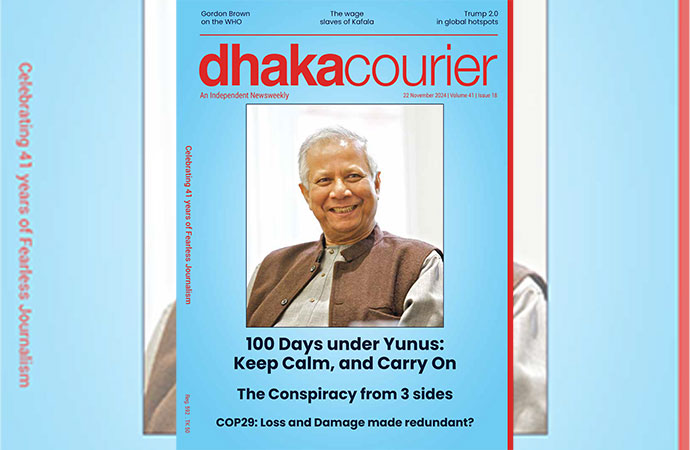Society

Photo: Courtesy
Setting the Scene
The status of biodiversity and the integration of flora and fauna have turned the haor into a uniquely beautiful feature of the landscape of Bangladesh. As the haor region is a marginalized area of the country, women and farmers face enormous challenges in the daily struggle of survival. The populations of the haor districts varies, the highest in Sylhet (3.36 million) and the lowest in Maulvibazar (2.10 million).
Although a little more than half of the population (53.67 percent) depends on agriculture, the corresponding figures for Sylhet and Netrokona district are not similar. Only 35 percent of haor dwellers depend on agriculture, while the rate is 71 percent in Netrokona.
However, instead of limiting themselves in agriculture, the haor inhabitants depend on a variety of occupations for their livelihood. A great portion (12.52 percent) of haor people makes their living through business. Others are employed at non-farm labor (6.13 percent), service (5.65 percent), fishery (2.59 percent), and transport (2.39 percent). A noteworthy percentage (3.41 percent) of the population depends on remittances sent by family members working abroad.
Socioeconomic and Environmental Losses
An average 50 percent cropped area in haor entirely lost its crops which was mainly Boro rice. However, community reports the damage to be much higher which is close to 90 percent in many areas. For example, Kishoreganj lost 90 percent of its rice crops according to the community; which however was 31.8 percent on average according to the official statement.
An immediate impact on fishery was ponds being washed away. Fish losing reported in Sunamganj, Kishoreganj, Netrokona, Moulvibazar and Sylhet. In Kishoreganj, it was mostly culture fishery. An estimated 903 MT of fish loss was reported. According to the fisheries office of Sunamganj, fishes of 20 haors from 11 Upazilas suffered from murrain. Among the Upazilas are Sadar, South Sunamganj, Jagannathpur, Dharmapasha, Dirai, Tahirpur, Jamalganj etc. Among the Haors are Dekhar, Dharam, Dhankuniya, Cheptir Haor, Chayar Haor etc.
Haor flood not only damaged human food, it also drowned animal food. It means a loss of fodder (straw) which in total is estimated to be 452,189 MT for all 7 affected districts. This made the environmental biodiversity of the region vulnerable to an extreme food crisis. Farmers and local cattle industry not only suffered from shortage of their own food but also fodder for their cattle. They are reportedly selling away their cattle at low rates. In addition, poor water quality and disease have killed ducks in number of areas further adding up to the damage. In the remote villages of the district, by drinking the polluted water of the haor, duck and ducklings also died.
Common Challenges in Haor
The overriding challenge of the inhabitants of haor is perhaps the fact that they have limited livelihood options if their existing livelihoods are disrupted by natural calamities. The complexity of this challenge restricts their livelihood options-holding them back from joining the journey towards national progress.
The haor inhabitants mainly rely on Boro crops and fishing, while a smaller section depends on livestock rearing and small business. Hence, enhancing climate resilient livelihood of haor inhabitants-a livelihood that can sustain its key functions (food, income, poverty reduction) and absorb the impacts of disasters and shocks without causing major disruption in the day-to-day functions -is their utmost need, in line with the priority of SDGs and 7th Five Year Plan (FYP) of Bangladesh.
Apart from that, underdeveloped state of communication infrastructure leads to the various challenges, insufficient amount of private sector investment and small-scale entrepreneurship in these areas.
Concluding Remarks
Decentralize the power, empower the women, Proper adaptation strategies, combine climate tolerant crops, financial incentives to farmers and public participation are indispensable in haor regions to communicate livelihood challenges solution.
The Writer is an Environmentalist and Associate Member, Bangladesh Economic Association

























Leave a Comment
Recent Posts
Foreign Adviser to join 10th G ...
Foreign Affairs Adviser Md Touhid Hossain left Dhaka on Sunday to atte ...
Bangladesh seeks top internati ...
The National Review Committee on the ministry of power, energy, and mi ...
Cold grips Kurigram as temperature falls amid mounti ..
In stormy seas, they steadied the ship
Why the Munia Murder case must be reinvestigated
Bangladesh and India are preparing for a high-level ..